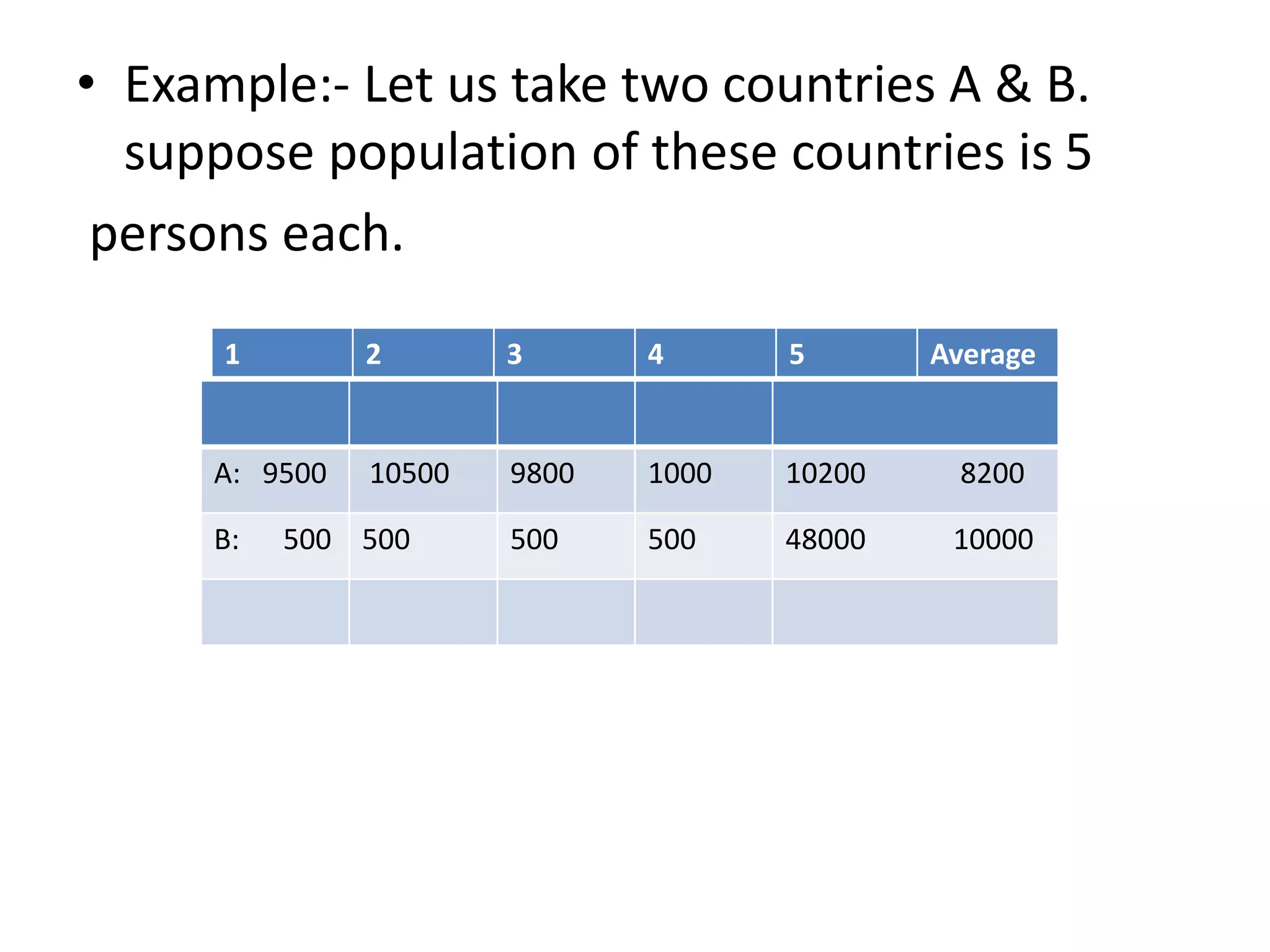This document discusses different perspectives on development and how it is defined. It notes that development goals can vary between individuals and groups, such as landless laborers prioritizing work and wages, while educated urban youth may want freedom and choice. Countries are often compared based on per capita income, with over $4500 USD considered high-income or developed. However, other factors like health, education, gender equality are also important development indicators. Sustainable development must consider both economic and social well-being for current and future generations.


























